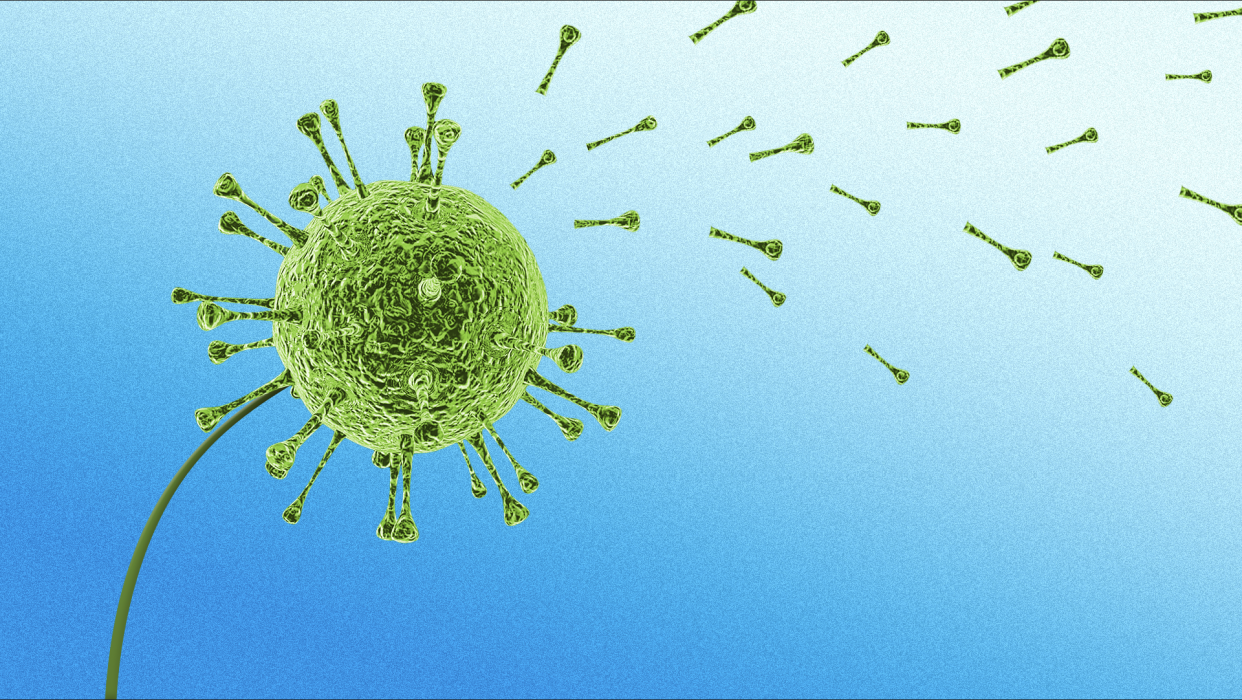Pirola, the new COVID variant, may infect more people than previous strains. Here's what you need to know about it.

Public health officials around the world say they're keeping an eye on a new COVID-19 variant that has surfaced in four countries. Called BA.2.86, aka Pirola, the variant has a lot of mutations that make it distinctly different from previous strains of the virus.
On Wednesday, the Centers for Disease Control and Prevention said this new lineage may be even more adept than previous variants at infecting people who already had COVID-19 or have been vaccinated. It's not yet clear whether BA.2.86 might cause more severe illness than older variants.
Officials from the CDC posted on X (formerly Twitter) about BA.2.86 late last week, noting that the agency is tracking the variant and that it has been detected in the U.S. "CDC is gathering more information and will share more about this lineage as we learn it," the statement says.
The World Health Organization also added BA.2.86 to its list of "currently circulating variants under monitoring." The variant was first detected on July 24 and was added to the list "based on the large number of mutations identified," the WHO says.
People in the U.S. were just introduced to Eris, which recently became the most dominant COVID-19 strain in the country and now causes 20.6% of cases of the virus here. But why is Pirola concerning, and what symptoms does it cause? Here's what you need to know, according to experts.
What is Pirola?
Pirola is a newly detected COVID-19 variant with a high number of mutations in its spike protein, Dr. William Schaffner, an infectious disease specialist and professor at the Vanderbilt University School of Medicine, tells Yahoo Life. According to Bloom Lab, which analyzes the evolution of viruses and proteins, there are 34 mutations in Pirola's spike protein from the variant it evolved from, BA.2, and 36 variations relative to XBB.1.5, which the fall COVID booster will target. The spike protein is how the virus enters human cells, Schaffner explains.
"It has a number of mutations that make it different from Omicron — it is an Omicron grandchild," Schaffner says.
As of right now, there have been only seven detected cases of Pirola in the world: three in Denmark, two in the U.S., one in Israel and one in the U.K., according to the global virus database GISAID.
What are the symptoms of Pirola?
There is not a lot of information at this point about Pirola symptoms. The Michigan Health Department said in a statement on X that one patient in the state who contracted it has had "mild symptoms" and is currently not in the hospital.
"There's not much clinical information that is known about this," Dr. Thomas Russo, a professor and chief of infectious diseases at the University at Buffalo in New York, tells Yahoo Life. Schaffner says, "It's early days, but we wouldn't expect anything different — all of these variants have the same symptoms."
Per the CDC, those include:
Fever or chills
Cough
Shortness of breath or difficulty breathing
Fatigue
Muscle or body aches
Headache
New loss of taste or smell
Sore throat
Congestion or runny nose
Nausea or vomiting
Diarrhea
How is Pirola different from Eris?
Eris, aka EG.5, is also a descendant of Omicron. As a result, Pirola and Eris are "part of the same family," Schaffner says. The two largely have different mutations in the spike protein, he says.
But, as of right now, Eris has spread more widely — in the U.S., at least — than Pirola.
"Pirola does appear to be rather contagious, and it may get into competition with Eris in terms of being more common," Schaffner says.
How concerned about Pirola should people be?
Bloom notes that many of BA.2.86's mutations are "known to cause antibody escape," meaning they can get around protections like the vaccine and prior immunity on some level. "This is similar to when we had Delta, and then Omicron showed up," Russo says. "The concern around Pirola is valid and real, and it's worth monitoring."
Even though Pirola has "a number of mutations," according to Russo, "immunologically, it's better than the Delta-to-Omicron jump because this is derived from [fellow Omicron variant] BA.2."
Schaffner says that "people shouldn't be obsessively concerned about this," adding, "This is what the virus does. It's not a major new variant of concern because it doesn't produce more severe disease."
Russo expects that the fall COVID-19 booster should be able to offer at least some protection against Pirola, as well as Eris — but how much isn't entirely clear right now. "That's why this variant has gotten a little buzz, because it has 36 different mutations," and that distinguishes it from the XBB.1.5 variant, on which the fall vaccine is based. "As a result, it's possible that it may be more immune-evasive."
Doctors stress that the low number of Pirola cases worldwide right now makes it difficult to know if this variant will be an issue. "It's brand new," Schaffner says.
